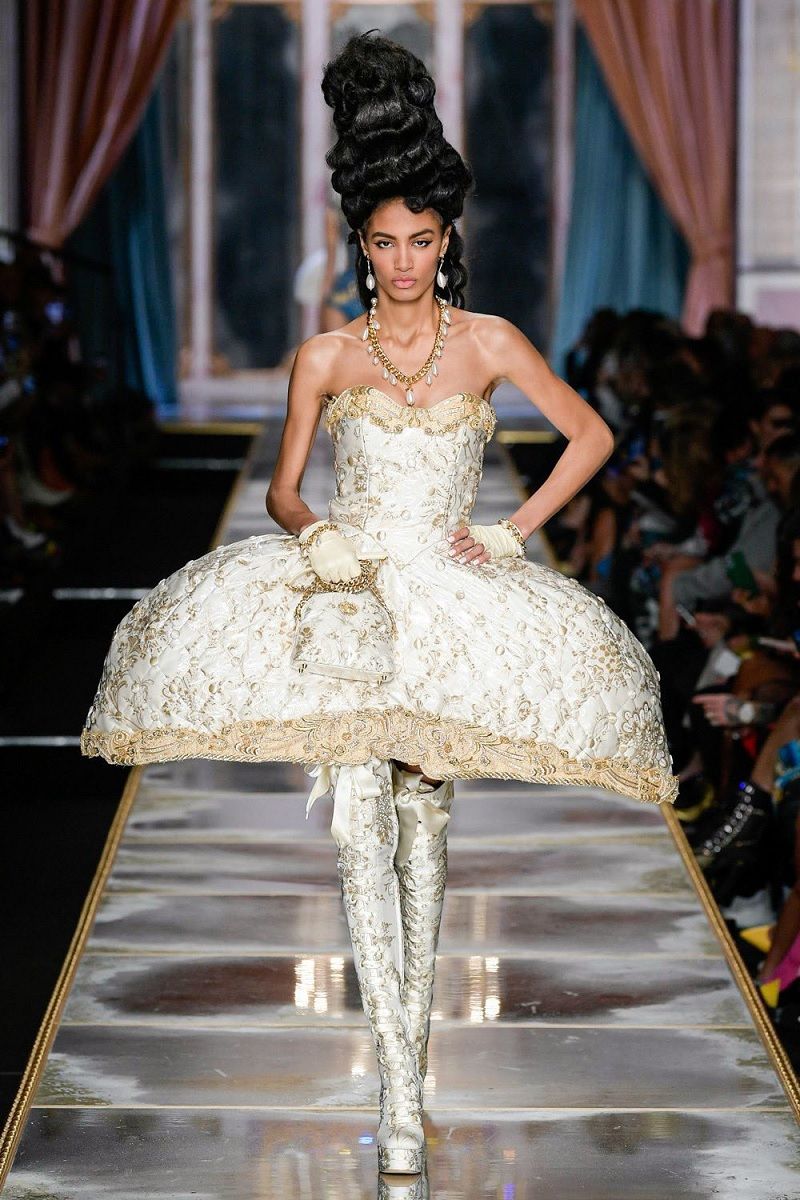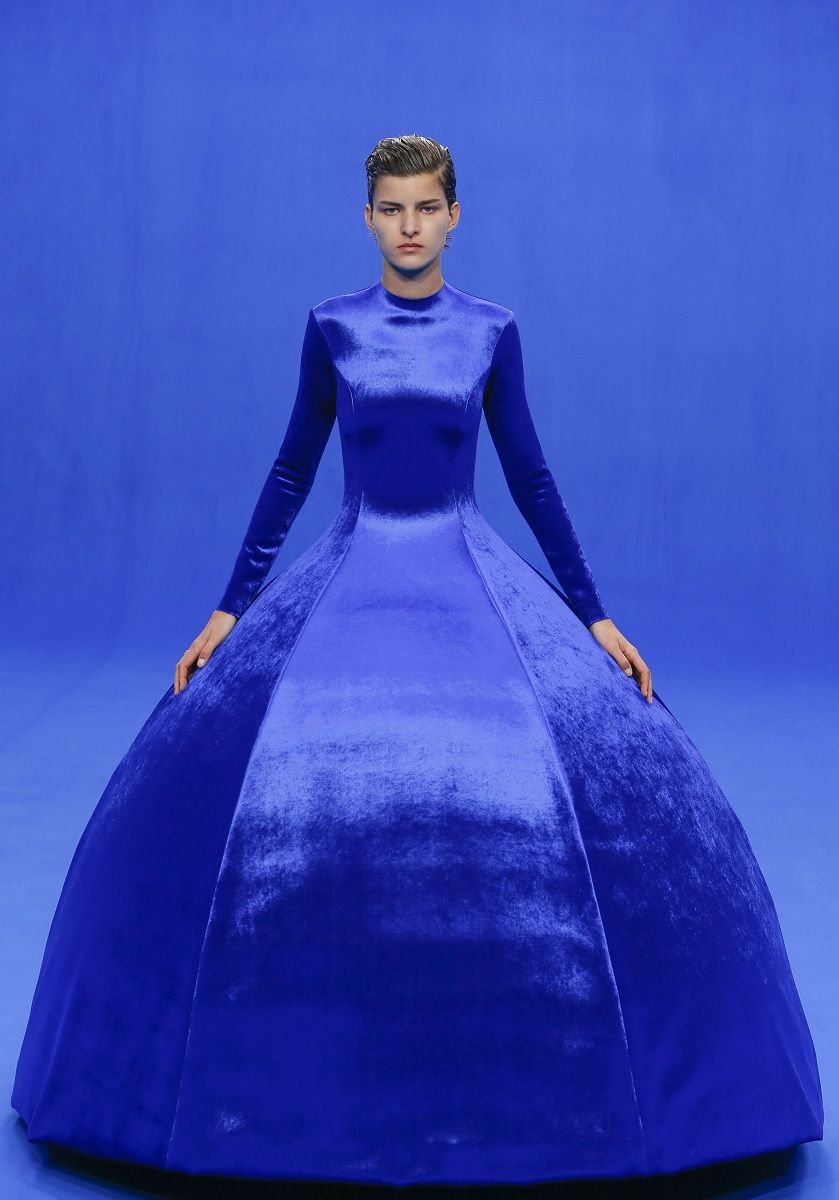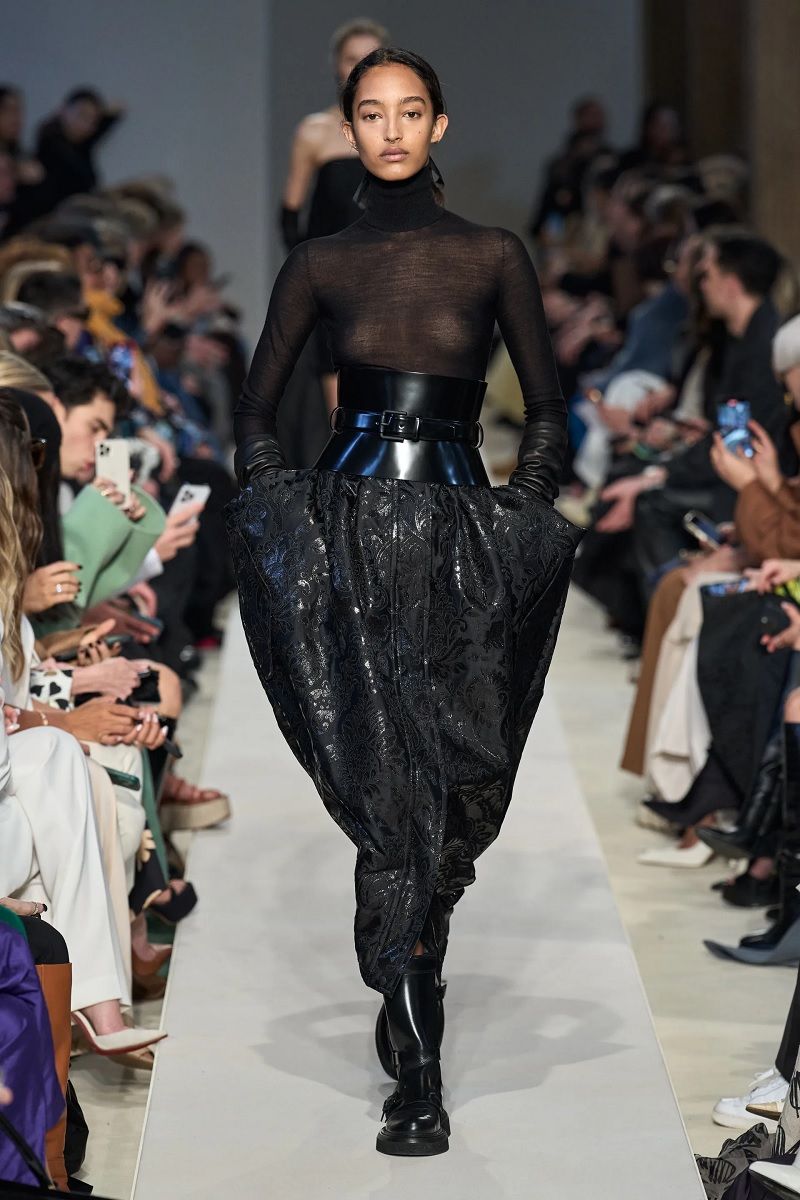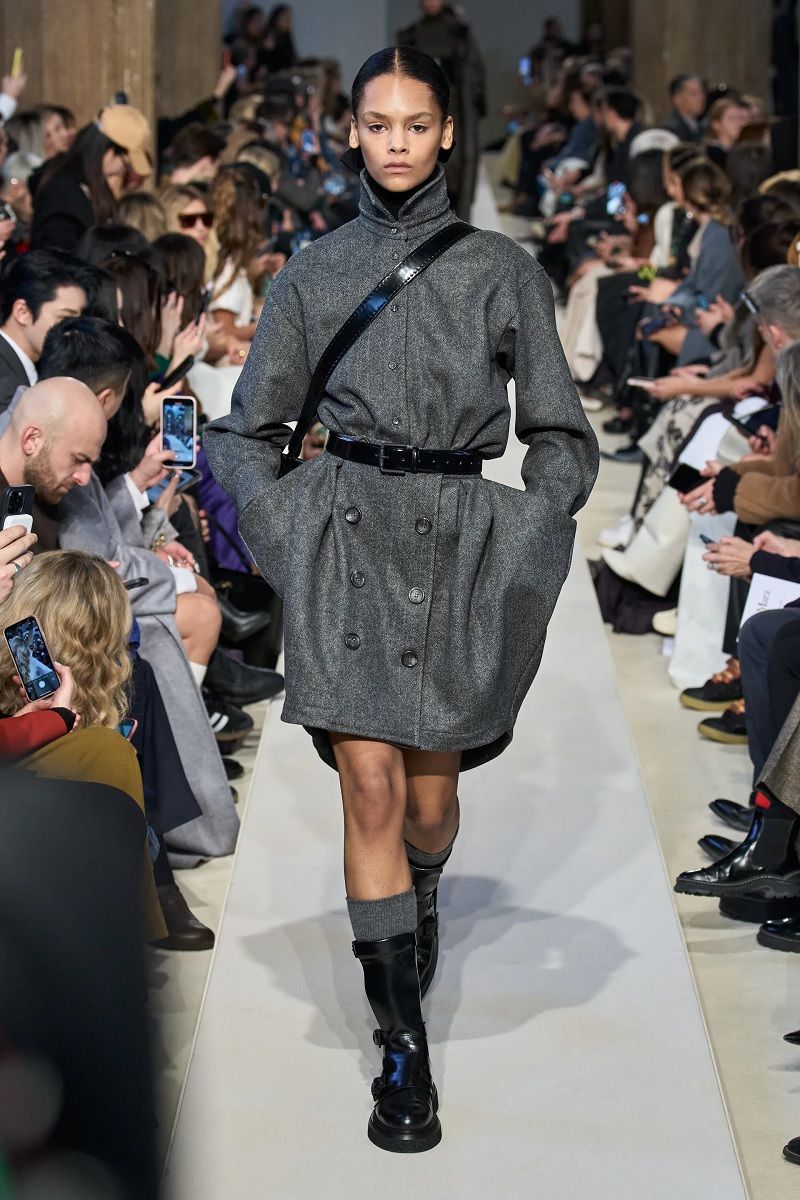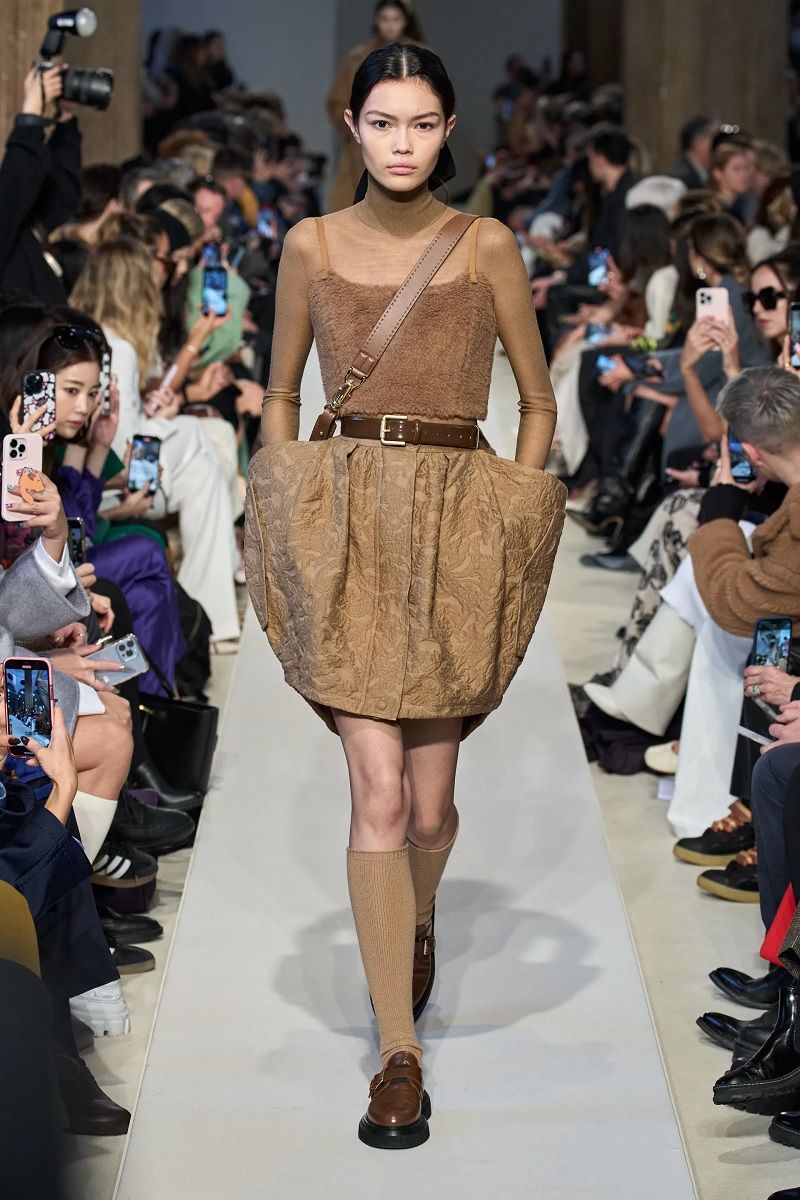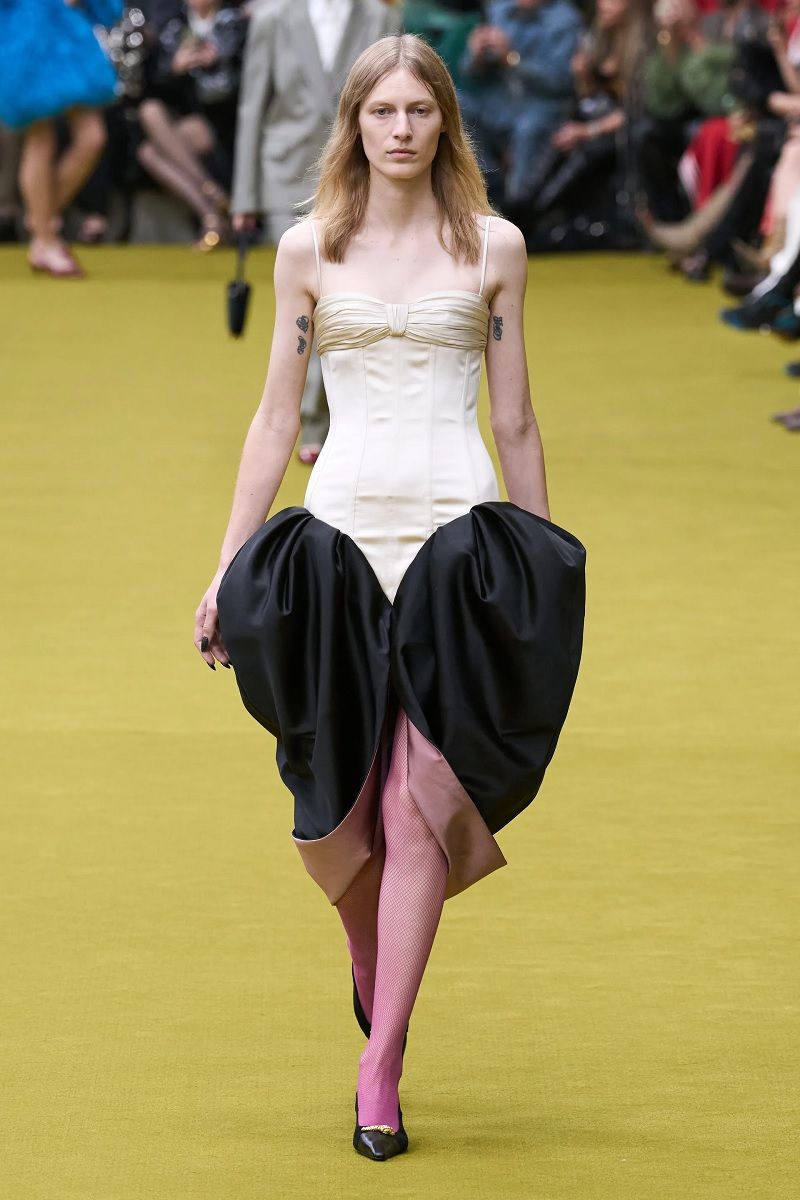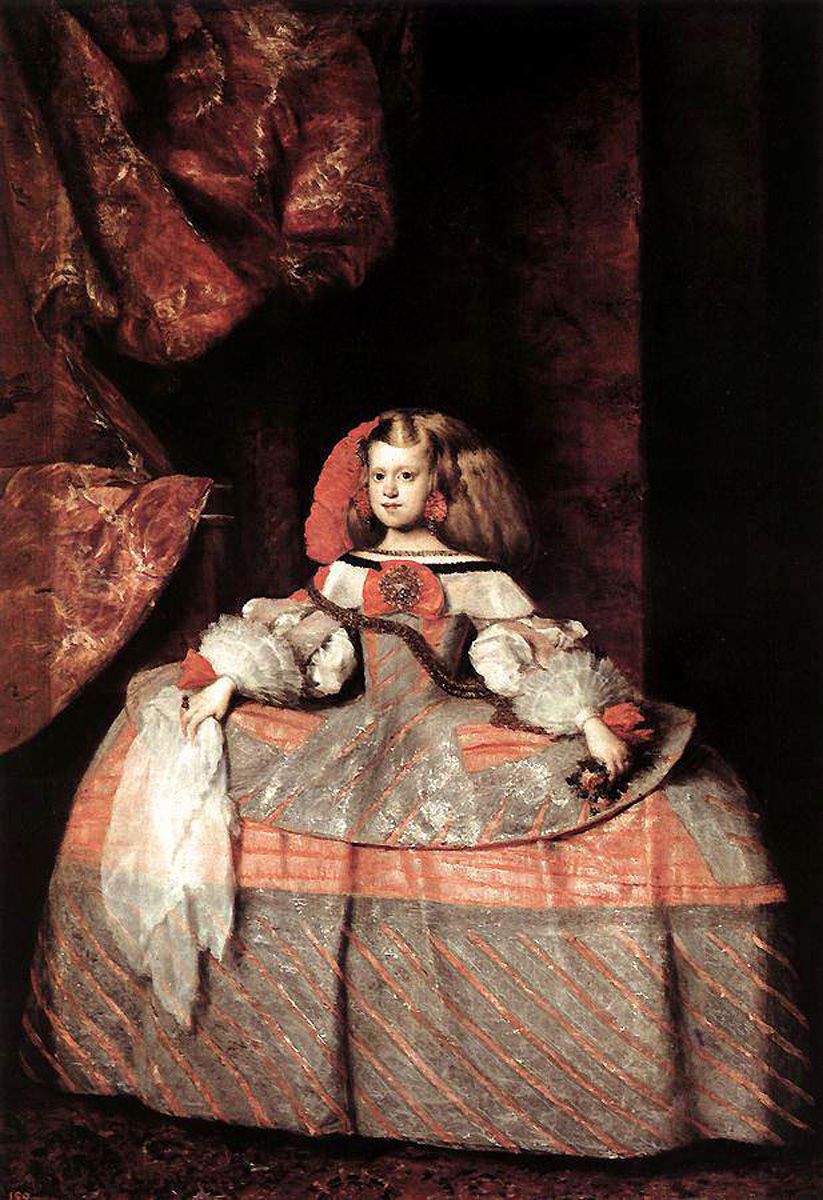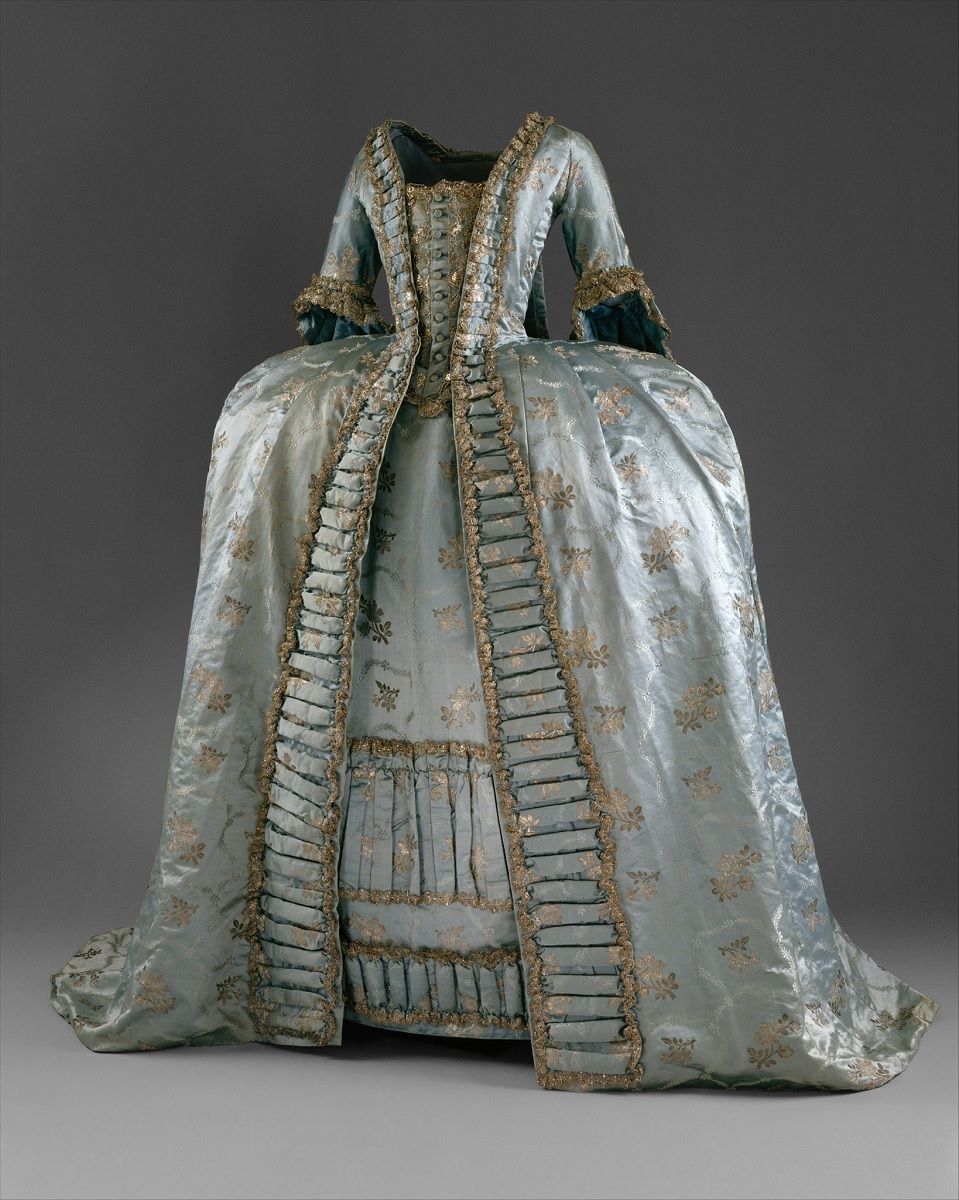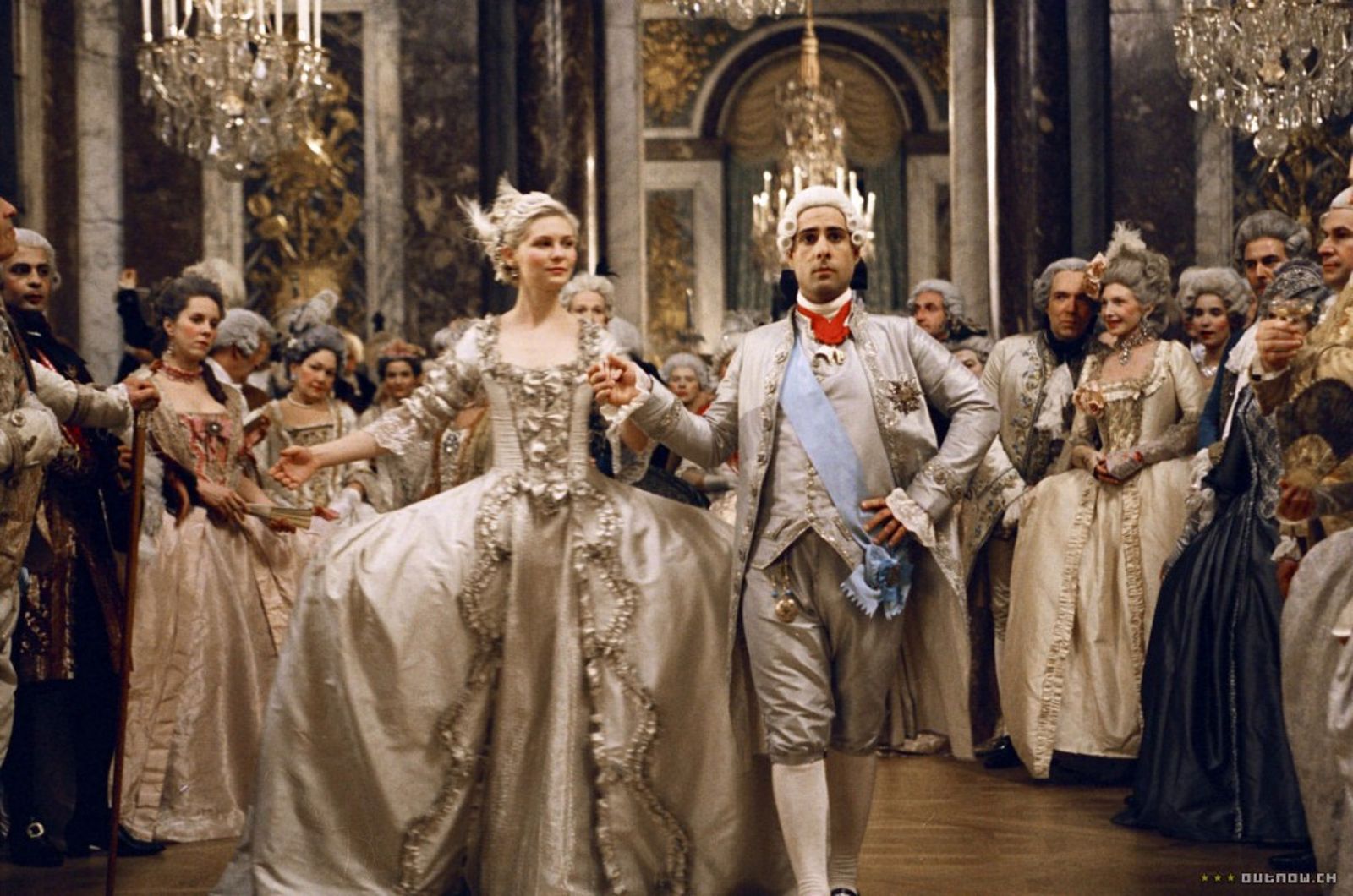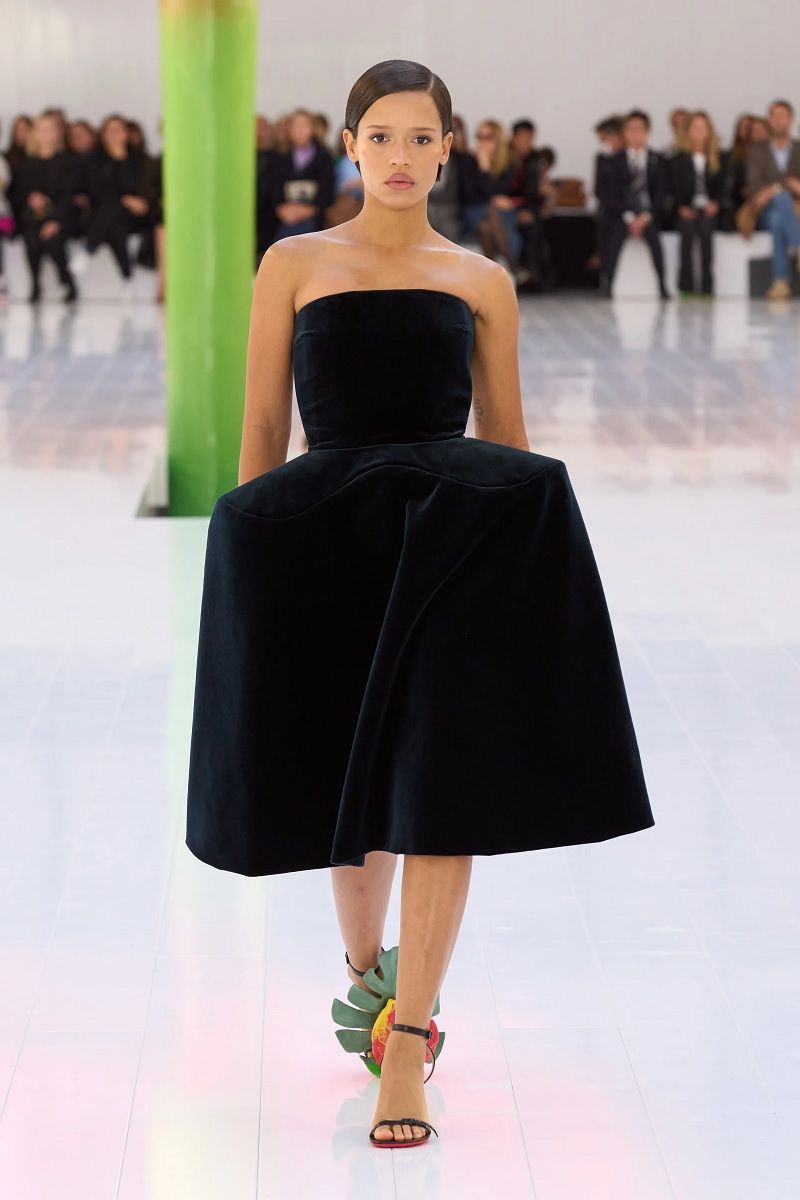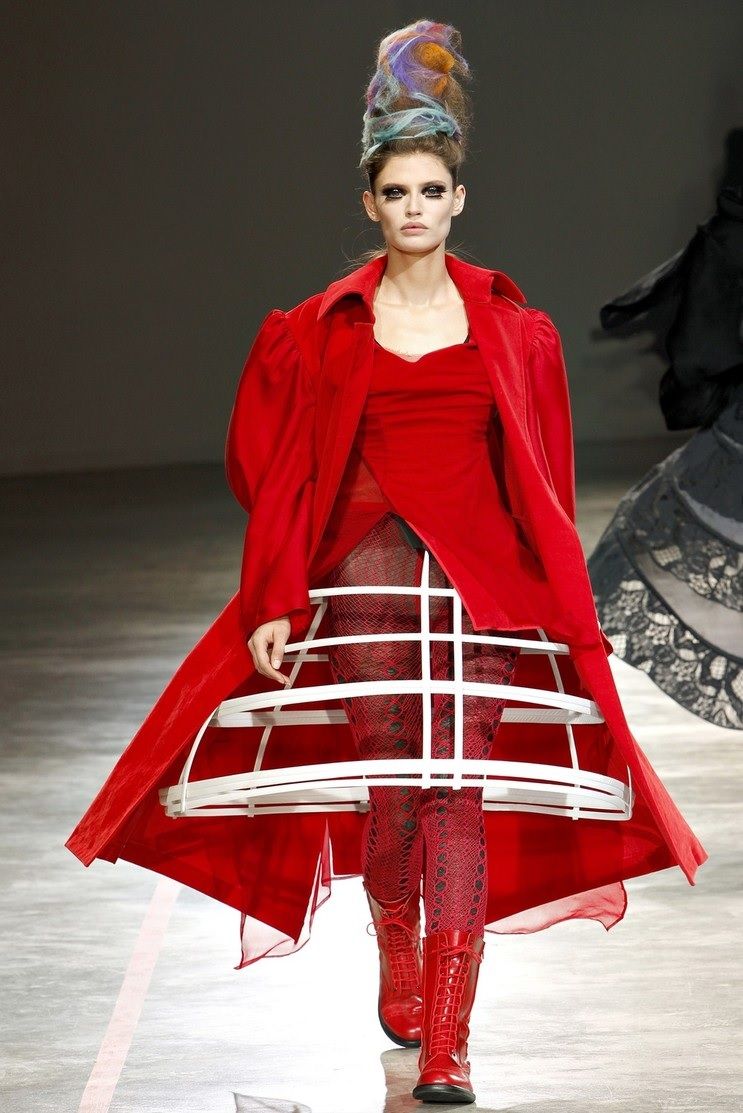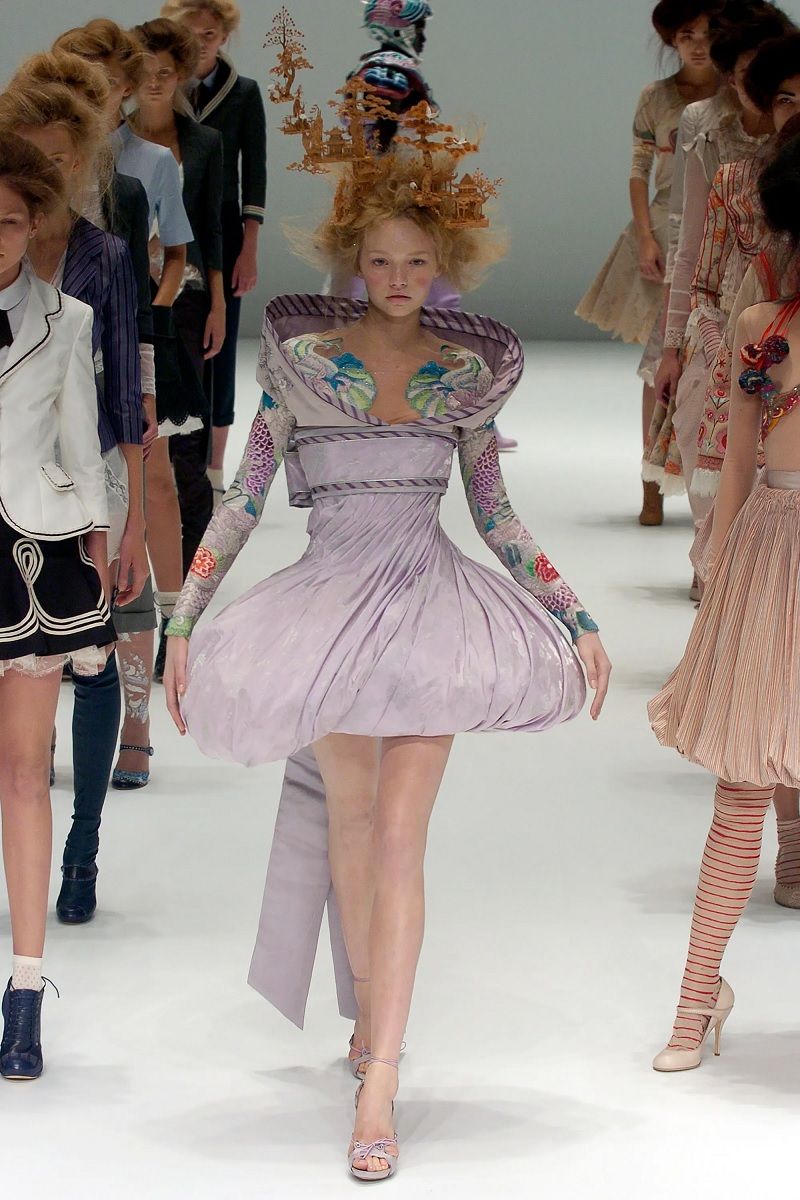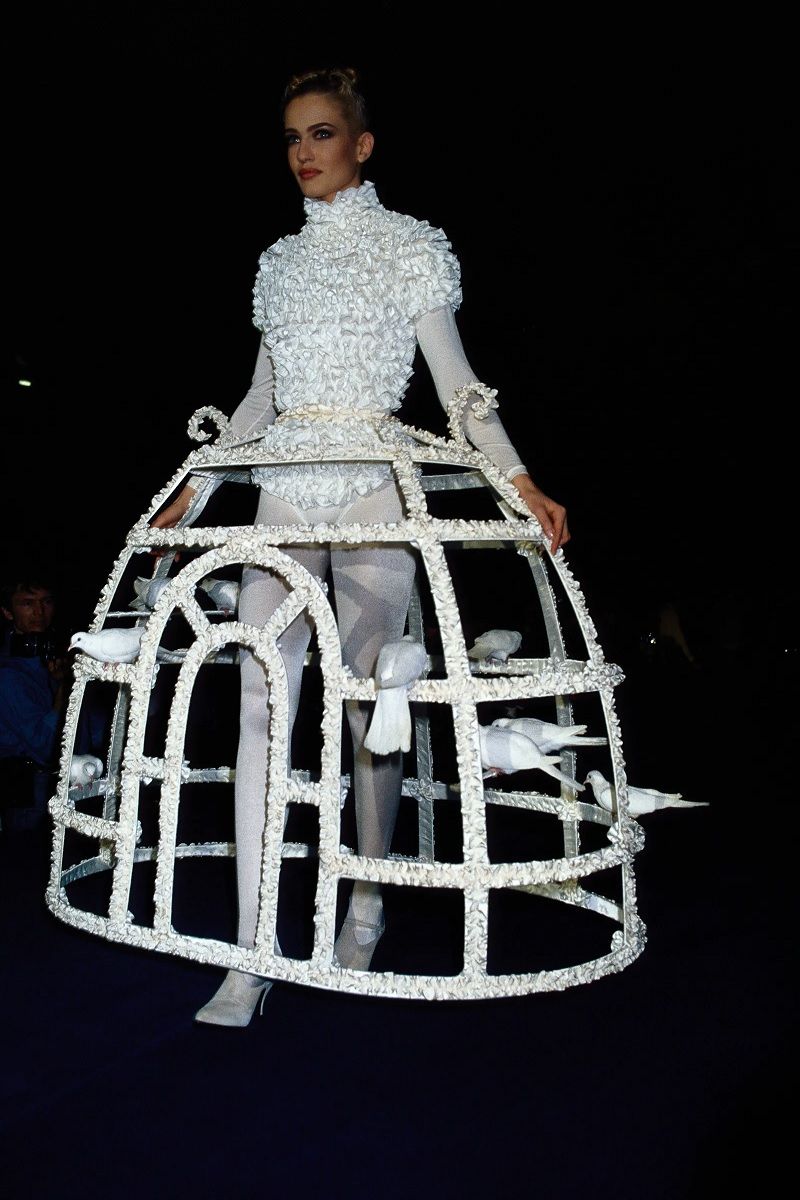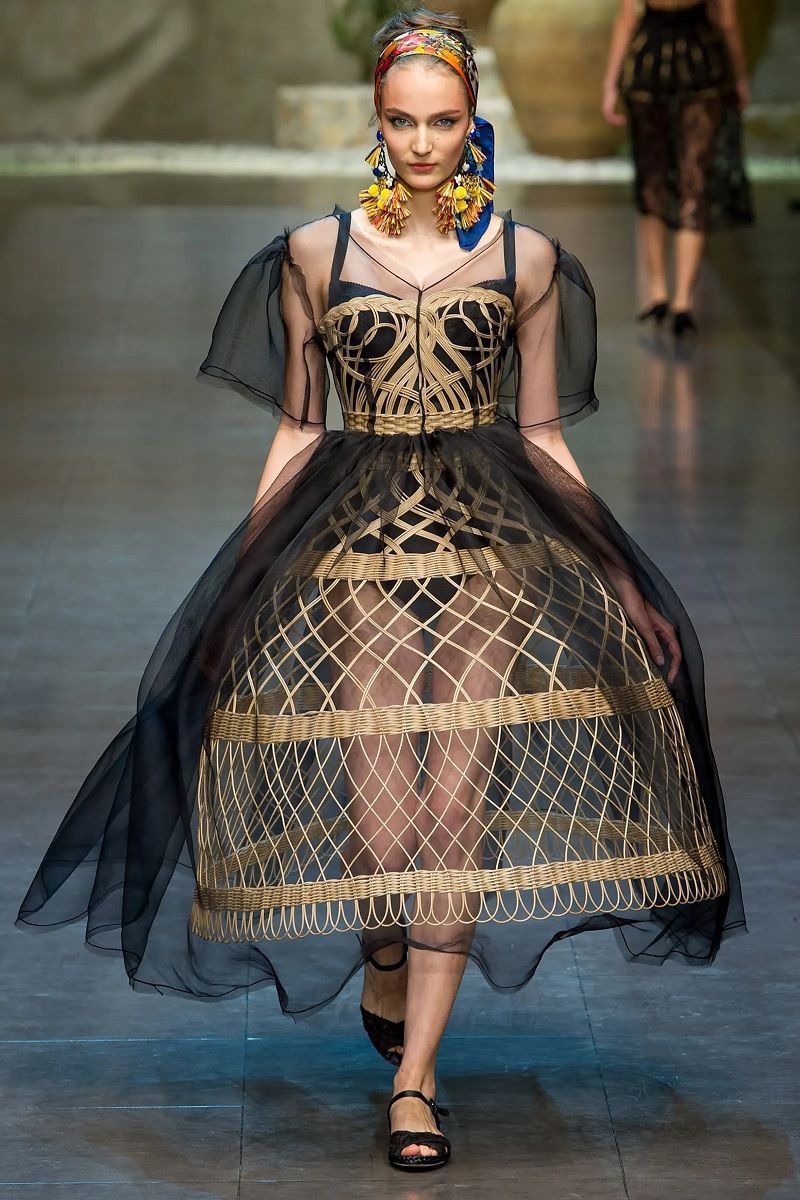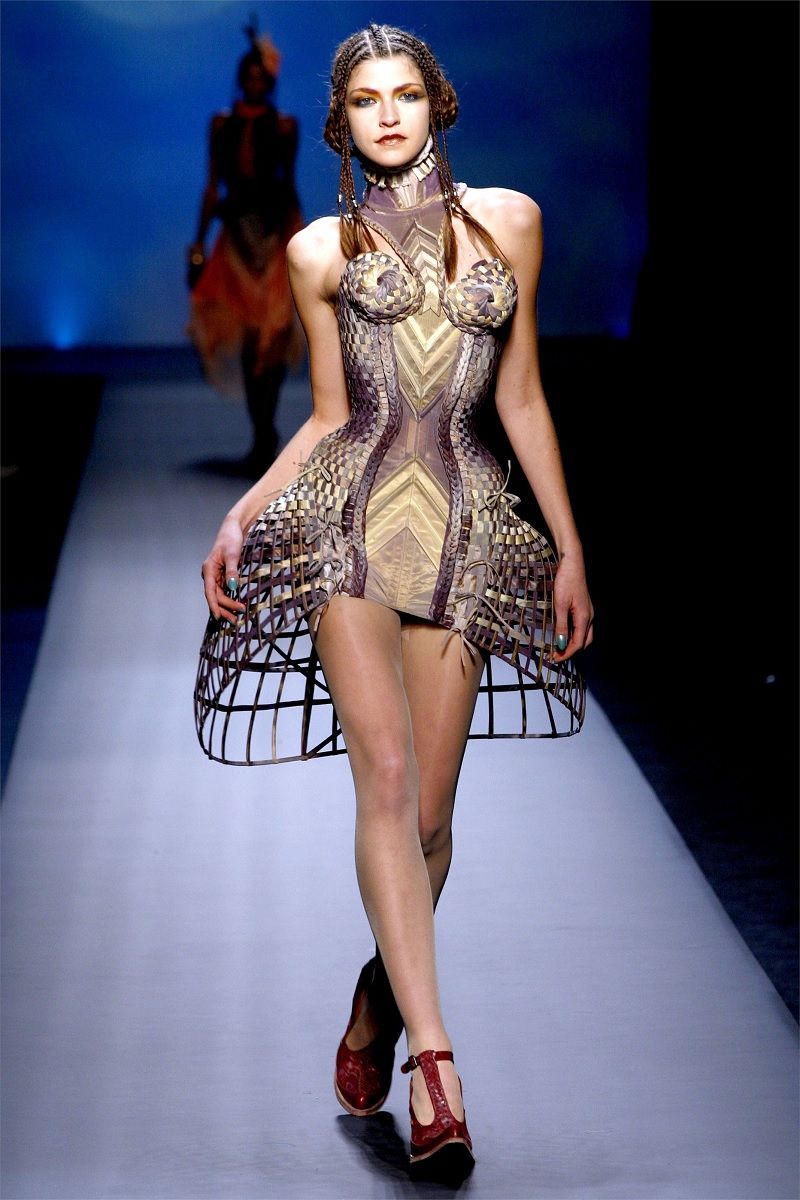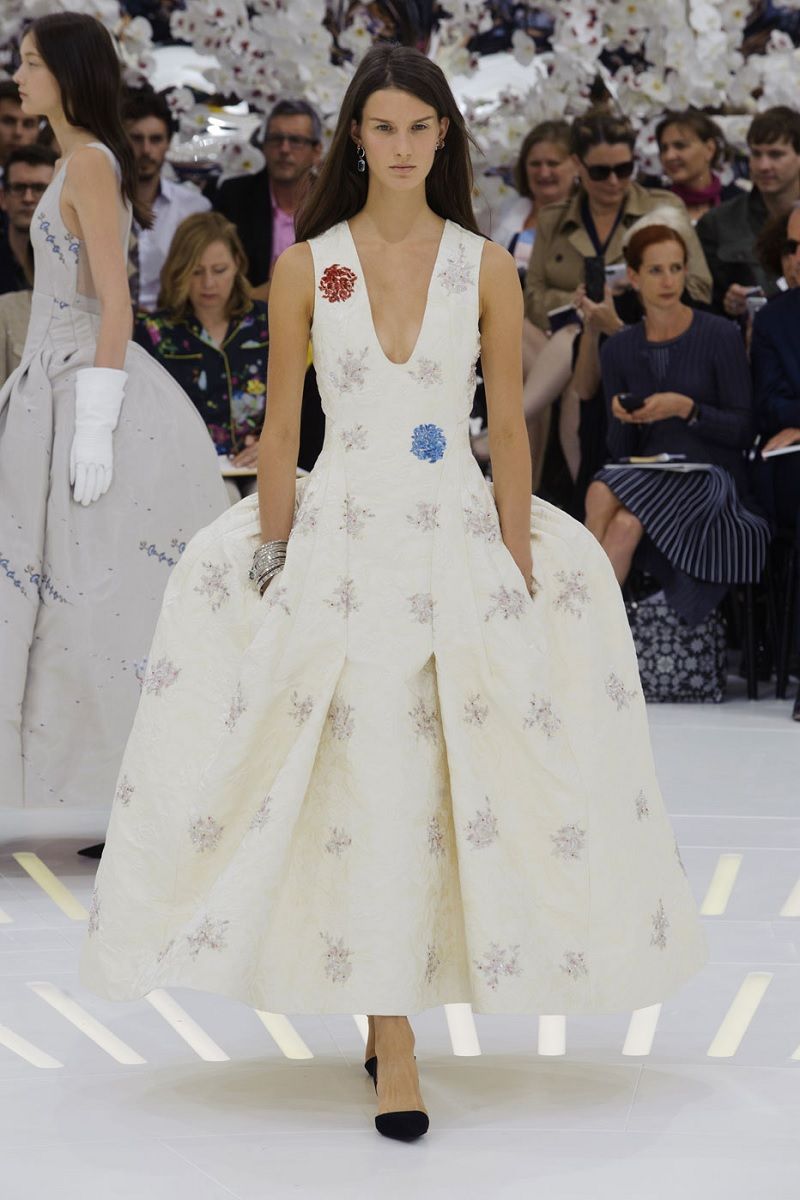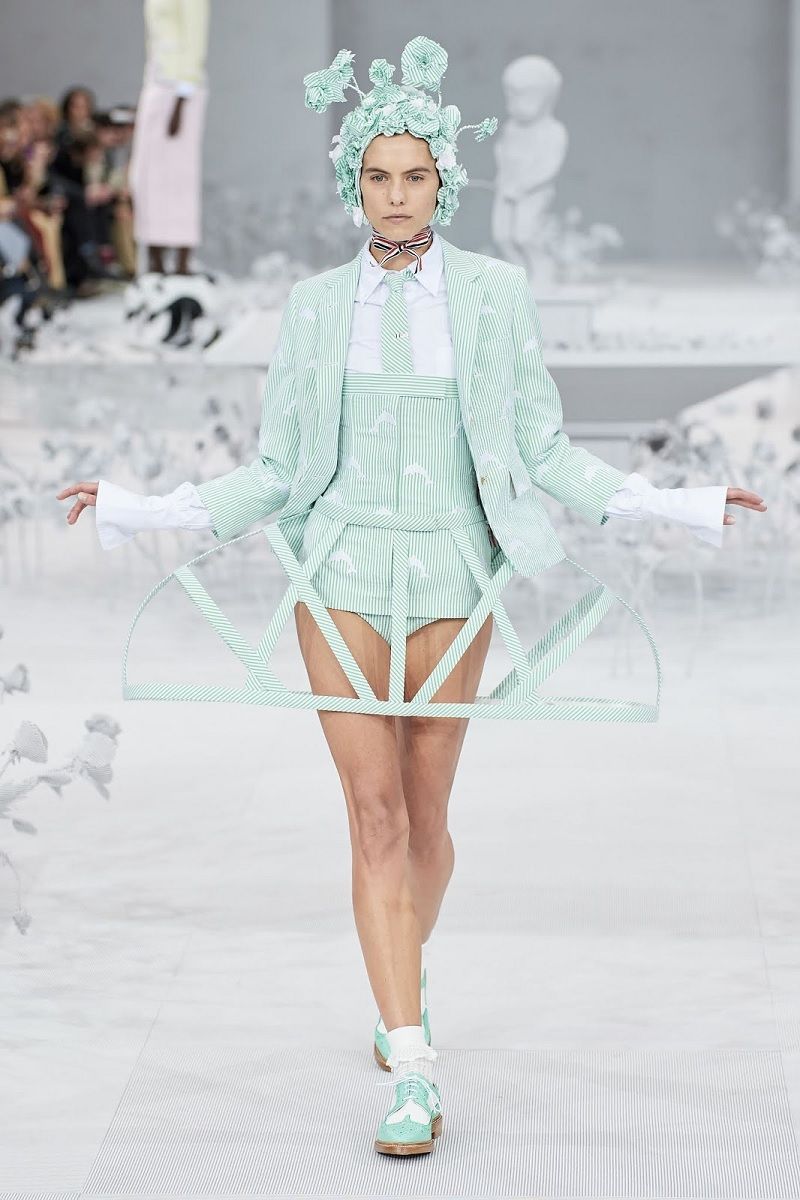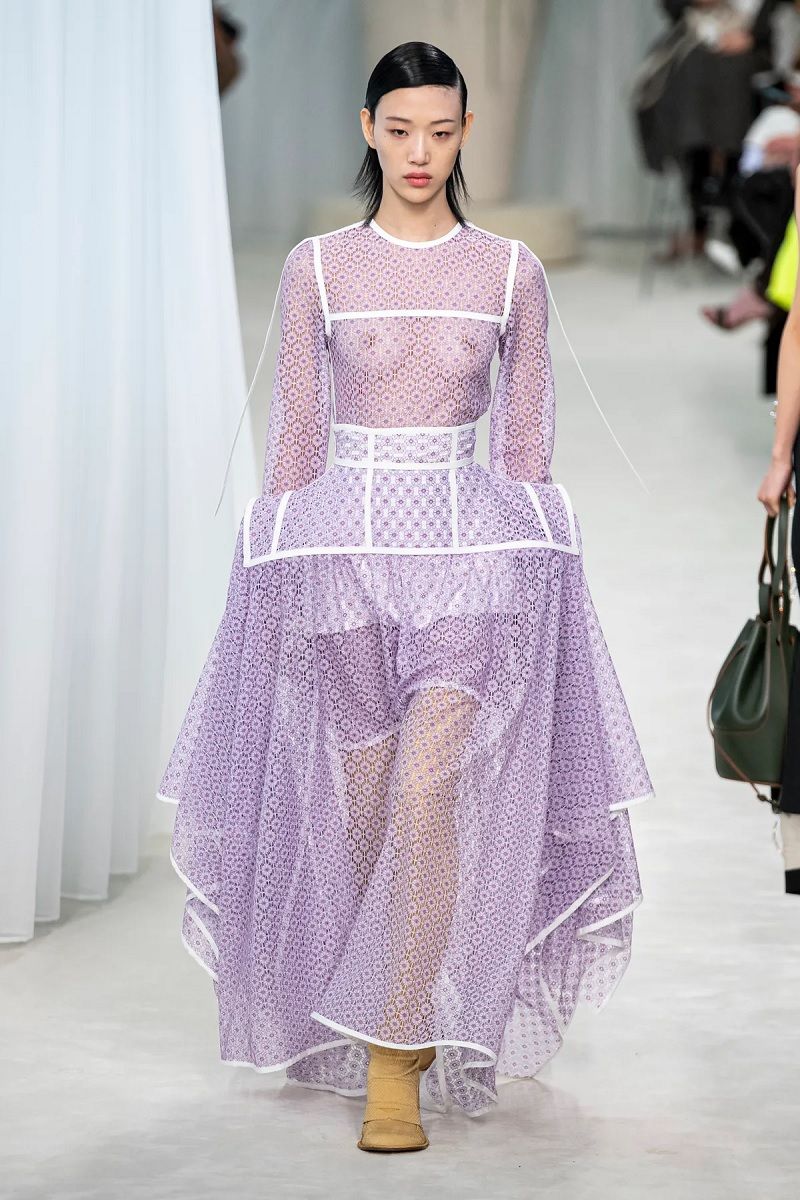
The return of the pannier Rigid architecture has survived the centuries and is now returning to contemporary collections
Fashion loves to look into the past. It looks back decades and even centuries to dictate the style of the future. From time to time, it selects a suggestion, a mood or a garment that, deconstructed, decontextualised and reassembled ad hoc, ends up in our wardrobes, alongside baggy jeans and ballet shoes. So it was with the corset, which went from being an instrument of female oppression to a symbol of empowerment, and so it is with the panier. It seems that designers have a magnetic fascination with all those elements of clothing that contribute to silhouettes that are far removed from natural forms.
From the sixteenth to the nineteenth century, fashion constricted and deformed the female body with bustiers, gorgères and understructures such as verdugale, panier, crinoline and tournure, veritable couture architectures that lent rigour and rigidity to the female figure, underscored the atmosphere of drama and romance, and offered a mirror of the female condition characteristic of the period. In Victorian-era France, paniers (their name derived from the baskets attached to the loads of donkeys) were a must. They were prized because they supported over-proportioned skirts that made the waist appear slimmer. Think of the historical dramas featuring Marie Antoinette and Queen Victoria or the portraits of Diego Velazquez. Like the famous painter, paniers originated in Spain and are an evolution of the verdugado, a stiff petticoat with hoops said to have been first used by Castilian Queen Juana de Portugal to conceal an illegitimate pregnancy. From the 16th century onwards, this garment spread to the rest of Europe and took on different shapes depending on the fashion: cone-shaped in Spain, roll-shaped in France and drum-shaped in England. Paniers were frames made of bone or whalebone splints that disproportionately strengthened the hips while leaving the front and back of the garment relatively flat. The wider the panier, the richer the women who wore it, so that on formal occasions it could reach a circumference of over two metres, making it very difficult, if not impossible, to walk through a door or get into a carriage.
In 1985, Vivienne Westwood revisited this underbelly when she combined her interest in historical dress with the idea of wearing underwear as outerwear and launched the "Mini Crini" With a crown on their head, a super-short but voluminous skirt and Rocking Horse dancers on their feet, they looked like Lolita, cute, rebellious little girls playing dress-up. Since then, Paniers and Crinolines have returned to the catwalk in cycles, allowing designers like John Galliano, Alexander McQueen and Thom Browne to experiment with extreme volumes and dress architecture. Raf Simons gave them a minimalist twist for Dior 2014/2015 haute couture; Dries Van Noten and Christian Lacroix introduced them in their SS20 collection; Comme des Garçons and Yohji Yamamoto made them special with their unique touch; even Virgil Abloh for Off-White FW22 reworked them in his own way. And how could we not remember Jeremy Scott's poppy and eye-catching homage to Marie Antoinette for Moschino FW20 collection?
Since the 2020 season, paniers have become a constant element in brands' proposals. We have seen them at Loewe, Balenciaga, Monse, Dior, Louis Vuitton, Dolce&Gabbana, Richard Quinn, Christopher Kane and many, many more. Paniers were also among the leading garments in the fashion shows at the last Milan Fashion Week, dedicated to the Autumn/Winter 2023 season. At Gucci, they were given a punk touch, with their extremely low waist, rivet-like metal rings and contrasting colours that emphasised their heart-shaped profile and essential lines; while at Max Mara, between maxi coats and wool suits, they became the starting point for a reflection on patriarchy and the perception of femininity in the 18th century.





















































